You as a business owner must protect your drinking water system and the health of your employees, customers and neighbors by preventing or protecting all cross connections on your premises.
What is a cross connection?
A cross connection occurs whenever a potable drinking water line is directly or indirectly connected to a nonpotable piece of equipment or piping. Examples of nonpotable equipment in your facility may include fire protection, lawn irrigation, air conditioning or cooling systems, as well as high pressure boilers. In a factory, cross connections may also occur within process equipment such as chemical mixing tanks, plating tanks, and heat exchangers.
How can a cross connection occur?
Nonpotable water or chemicals used in a system or equipment can end up in the drinking water line as a result of backpressure or backsiphonage. Backpressure occurs when the pressure in the equipment or system (e.g., air conditioning system, boiler, etc.) is greater than the pressure in the drinking water line. Backsiphonage occurs when the pressure in the drinking water line drops (due to fairly routine occurrences such as water main breaks, fires, heavy demand, etc.) and contaminants are sucked out of the system and into the drinking water line.
Why should I be concerned about cross connections?
An unprotected or inadequately protected cross connection on your premises could contaminate the drinking water not only in your facility, but in neighboring businesses and homes.
Severe illnesses have been caused by cross connection events that could have been prevented. Unprotected and inadequately protected cross connections have been known to cause outbreaks of hepatitis A, gastroenteritis, Legionnaire’s disease, chemical poisoning, body lesions (from exposure through showering), damage to plumbing fixtures, and explosions.
What is my responsibility as a facility owner?
You must have your facility surveyed by your local water department to determine if any cross connections exist. You may want to expedite the process and get prepared for the water department’s survey by having your facility pre-surveyed by a plumbing contractor. Each cross connection must be eliminated or properly protected by a backflow preventer. All work done on the internal plumbing system of your facility must be performed by a Massachusetts licensed plumber. Any changes to your plumbing must be approved by your local plumbing inspector and public water supplier as necessary.
Hose Bib Distribution-
The ordinary garden hose is the most common way to contaminate the water supply. This can happen one end of a common garden when hose is attached to and outdoor faucet (sill cock), and the other end of the hose connects to an aspirator type bottle can be siphoned back into the drinking water water supply.
You can easily prevent the possibility of this type of contamination by installing a Hose Bibb vacuum breaker. This free device is available at our office and simply attaches to a threaded water faucet.
Where can I go for more information?
Please contact:
DEP, Division of Water Supply at (617) 292-5770, or The Water Department at (508) 428-6691
